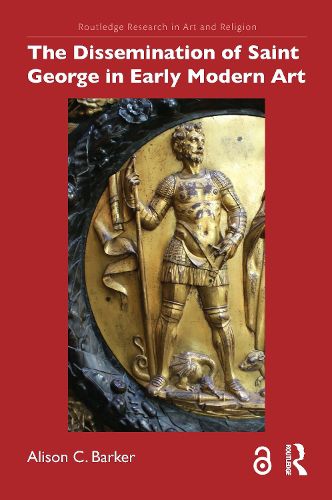Readings Newsletter
Become a Readings Member to make your shopping experience even easier.
Sign in or sign up for free!
You’re not far away from qualifying for FREE standard shipping within Australia
You’ve qualified for FREE standard shipping within Australia
The cart is loading…






Focusing on England, the German-speaking territories and the Italian peninsula, this book examines how Saint George's image crossed boundaries and was disseminated.
Alison Barker attempts to "dissolve" the boundary of the Alps through examination of images of Saint George, the "travelling" saint. She argues that George's status as chivalric hero and Christian martyr made him uniquely qualified to cross boundaries in this way, especially through the networks of courts and court culture. Her research demonstrates how the highly recognisable iconography of Saint George's image meant something different, depending on where he was represented and who was looking at him. Through four case studies that examine how he was depicted and viewed across boundaries of space and media, this book charts a multi-layered cultural network, linking different artists and audiences from three regions. Each case study makes a claim about Saint George and how he acts and is used by four sections of society: rulers, artists, corporate groups and the broad masses.
The book will be of interest to scholars working in art history, religious history and Renaissance studies.
The Open Access version of this book, available at http://www.taylorfrancis.com, has been made available under a Creative Commons Attribution-Non Commercial-No Derivatives (CC BY-NC-ND) 4.0 license
$9.00 standard shipping within Australia
FREE standard shipping within Australia for orders over $100.00
Express & International shipping calculated at checkout
Focusing on England, the German-speaking territories and the Italian peninsula, this book examines how Saint George's image crossed boundaries and was disseminated.
Alison Barker attempts to "dissolve" the boundary of the Alps through examination of images of Saint George, the "travelling" saint. She argues that George's status as chivalric hero and Christian martyr made him uniquely qualified to cross boundaries in this way, especially through the networks of courts and court culture. Her research demonstrates how the highly recognisable iconography of Saint George's image meant something different, depending on where he was represented and who was looking at him. Through four case studies that examine how he was depicted and viewed across boundaries of space and media, this book charts a multi-layered cultural network, linking different artists and audiences from three regions. Each case study makes a claim about Saint George and how he acts and is used by four sections of society: rulers, artists, corporate groups and the broad masses.
The book will be of interest to scholars working in art history, religious history and Renaissance studies.
The Open Access version of this book, available at http://www.taylorfrancis.com, has been made available under a Creative Commons Attribution-Non Commercial-No Derivatives (CC BY-NC-ND) 4.0 license